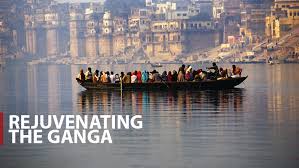World Bank enhances support with US$400 million for rejuvenating the Ganga River
- July 1, 2020
- Posted by: Lyn Wilson
- Category: Corporate, Engineering, Investment and Finance, Water Treatment, Asia

The World Bank increased its funding for the Government of India’s program to rejuvenate the Ganga River with a US$400 million operation.
The Second National Ganga River Basin Project (SNGRBP), approved by the World Bank will support Namami Gange program and its long-term vision for controlling pollution in the river and restoring its water quality. The SNGRBP will finance sewage networks and treatment plants in select urban areas to help control pollution discharges.
Over 80 percent of the pollution load in the Ganga comes from untreated domestic wastewater from towns and cities along the river and its tributaries. The project will help strengthen the management of the river basin which is home to more than 500 million people.
The World Bank has been supporting the government’s efforts since 2011 through the ongoing National Ganga River Basin Project, which helped set up the National Mission for Clean Ganga (NMCG) as the nodal agency to manage the river, and financed sewage treatment infrastructure in several riverside towns and cities.
Junaid Ahmad, World Bank Country Director in India said:
“The government’s Namami Gange Program has revitalized India’s efforts to rejuvenate the Ganga.” He continued to say: “The first World Bank project helped build critical sewage infrastructure in 20 pollution hotspots along the river, and this Project will help scale this up to the tributaries. It will also help the government strengthen the institutions needed to manage a river basin as large and complex as the Ganga Basin.”
The Ganga Basin covers a quarter of India’s landmass, and is a critical economic and environmental resource for the country. It provides over one-third of India’s surface water, includes the country’s largest irrigated area and is key to India’s water and food security. Over 40 percent of India’s GDP is generated in the densely populated basin.
Xavier Chauvot de Beauchene and Upneet Singh both co-task team leaders (TTL) for the SNGRBP said:
“The Project will help expand the coverage of sewage treatment infrastructure to more towns in the Ganga Basin, and focus on making sure that these assets are operated and maintained efficiently in the long term. The Project will also help NMCG develop state-of-the-art tools to help manage the river basin more effectively.”
To ensure that these infrastructure assets function effectively and are well maintained, the Project will build on the innovative Hybrid Annuity Model (HAM) of public private partnership introduced under the ongoing NGRBP, and which has become the solution of choice for sewage treatment investments in the Ganga Basin.
The Project also provides up to $19 million of IBRD Payment Guarantees to backstop the government’s payment obligations for three HAM-PPP investments on the Ganga’s tributaries.
Satheesh Sundararajan, Senior Infrastructure Financing Specialist said:
“This is the first-ever IBRD Guarantee for wastewater treatment and the first IBRD Guarantee in the water sector in India, and is expected to help free up public resources in the current economic situation.”
The Second National Ganga River Basin Project comprises a loan for the amount of US$381 million and a proposed Guarantee for the amount of up to US$19 million. The variable spread loan has a maturity of 18.5 years including a grace period of 5 years. The Guarantee Expiry Date will be 18 years from the Guarantee Effectiveness Date.
These infrastructure investments and the jobs they will generate will also help India’s economic recovery from the COVID-19 crisis.
